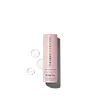What's inside
What's inside
 Key Ingredients
Key Ingredients

 Benefits
Benefits

 Concerns
Concerns

No concerns
 Ingredients Side-by-side
Ingredients Side-by-side

Water
Skin ConditioningGlycerin
HumectantPentylene Glycol
Skin ConditioningSodium Hyaluronate
HumectantBetaine
HumectantHydrolyzed Wheat Protein
Skin ConditioningOligopeptide-78
Skin ConditioningPalmitoyl Decapeptide-21
Skin ConditioningZinc Palmitoyl Nonapeptide-14
Skin ConditioningHexapeptide-9
Skin ConditioningDecapeptide-21
Skin ConditioningOligopeptide-1
Skin ConditioningXylitylglucoside
HumectantAnhydroxylitol
HumectantXylitol
HumectantSucrose
HumectantPlankton Extract
Skin ConditioningGlucose
HumectantLecithin
EmollientButylene Glycol
HumectantHydroxyacetophenone
AntioxidantSodium Hydroxide
BufferingWater, Glycerin, Pentylene Glycol, Sodium Hyaluronate, Betaine, Hydrolyzed Wheat Protein, Oligopeptide-78, Palmitoyl Decapeptide-21, Zinc Palmitoyl Nonapeptide-14, Hexapeptide-9, Decapeptide-21, Oligopeptide-1, Xylitylglucoside, Anhydroxylitol, Xylitol, Sucrose, Plankton Extract, Glucose, Lecithin, Butylene Glycol, Hydroxyacetophenone, Sodium Hydroxide
Water
Skin ConditioningGlycerin
HumectantPolyacrylate Crosspolymer-6
Emulsion StabilisingHydroxyethyl Acrylate/Sodium Acryloyldimethyl Taurate Copolymer
Emulsion StabilisingSodium Benzoate
MaskingPEG-40 Hydrogenated Castor Oil
EmulsifyingTrideceth-9
EmulsifyingPotassium Sorbate
PreservativeDisodium EDTA
Parfum
MaskingLactobionic Acid
BufferingMaris Aqua
HumectantTocopherol
AntioxidantSodium Acetylated Hyaluronate
HumectantHelianthus Annuus Seed Oil
EmollientPropylene Glycol
HumectantPolysorbate 60
EmulsifyingSorbitan Isostearate
EmulsifyingPadina Pavonica Thallus Extract
Skin ConditioningCitric Acid
BufferingT-Butyl Alcohol
PerfumingLimonene
PerfumingZinc Gluconate
Skin ConditioningMagnesium Aspartate
Skin ConditioningAcacia Decurrens Flower Extract
MaskingChlorella Vulgaris Extract
Skin ConditioningCollagen Amino Acids
MoisturisingRosa Centifolia Flower Extract
AstringentLinalool
PerfumingPhenoxyethanol
PreservativeLeuconostoc/Radish Root Ferment Filtrate
AntimicrobialCitronellol
PerfumingGeraniol
PerfumingSodium Hydroxide
BufferingCopper Gluconate
Skin ConditioningWater, Glycerin, Polyacrylate Crosspolymer-6, Hydroxyethyl Acrylate/Sodium Acryloyldimethyl Taurate Copolymer, Sodium Benzoate, PEG-40 Hydrogenated Castor Oil, Trideceth-9, Potassium Sorbate, Disodium EDTA, Parfum, Lactobionic Acid, Maris Aqua, Tocopherol, Sodium Acetylated Hyaluronate, Helianthus Annuus Seed Oil, Propylene Glycol, Polysorbate 60, Sorbitan Isostearate, Padina Pavonica Thallus Extract, Citric Acid, T-Butyl Alcohol, Limonene, Zinc Gluconate, Magnesium Aspartate, Acacia Decurrens Flower Extract, Chlorella Vulgaris Extract, Collagen Amino Acids, Rosa Centifolia Flower Extract, Linalool, Phenoxyethanol, Leuconostoc/Radish Root Ferment Filtrate, Citronellol, Geraniol, Sodium Hydroxide, Copper Gluconate
Ingredients Explained
These ingredients are found in both products.
Ingredients higher up in an ingredient list are typically present in a larger amount.
Glycerin is already naturally found in your skin. It helps moisturize and protect your skin.
A study from 2016 found glycerin to be more effective as a humectant than AHAs and hyaluronic acid.
As a humectant, it helps the skin stay hydrated by pulling moisture to your skin. The low molecular weight of glycerin allows it to pull moisture into the deeper layers of your skin.
Hydrated skin improves your skin barrier; Your skin barrier helps protect against irritants and bacteria.
Glycerin has also been found to have antimicrobial and antiviral properties. Due to these properties, glycerin is often used in wound and burn treatments.
In cosmetics, glycerin is usually derived from plants such as soybean or palm. However, it can also be sourced from animals, such as tallow or animal fat.
This ingredient is organic, colorless, odorless, and non-toxic.
Glycerin is the name for this ingredient in American English. British English uses Glycerol/Glycerine.
Learn more about GlycerinSodium Hydroxide is also known as lye or caustic soda. It is used to adjust the pH of products; many ingredients require a specific pH to be effective.
In small amounts, sodium hydroxide is considered safe to use. However, large amounts may cause chemical burns due to its high alkaline.
Your skin has a natural pH and acid mantle. This acid mantle helps prevent harmful bacteria from breaking through. The acid mantle also helps keep your skin hydrated.
"Alkaline" refers to a high pH level. A low pH level would be considered acidic.
Learn more about Sodium HydroxideWater. It's the most common cosmetic ingredient of all. You'll usually see it at the top of ingredient lists, meaning that it makes up the largest part of the product.
So why is it so popular? Water most often acts as a solvent - this means that it helps dissolve other ingredients into the formulation.
You'll also recognize water as that liquid we all need to stay alive. If you see this, drink a glass of water. Stay hydrated!
Learn more about Water